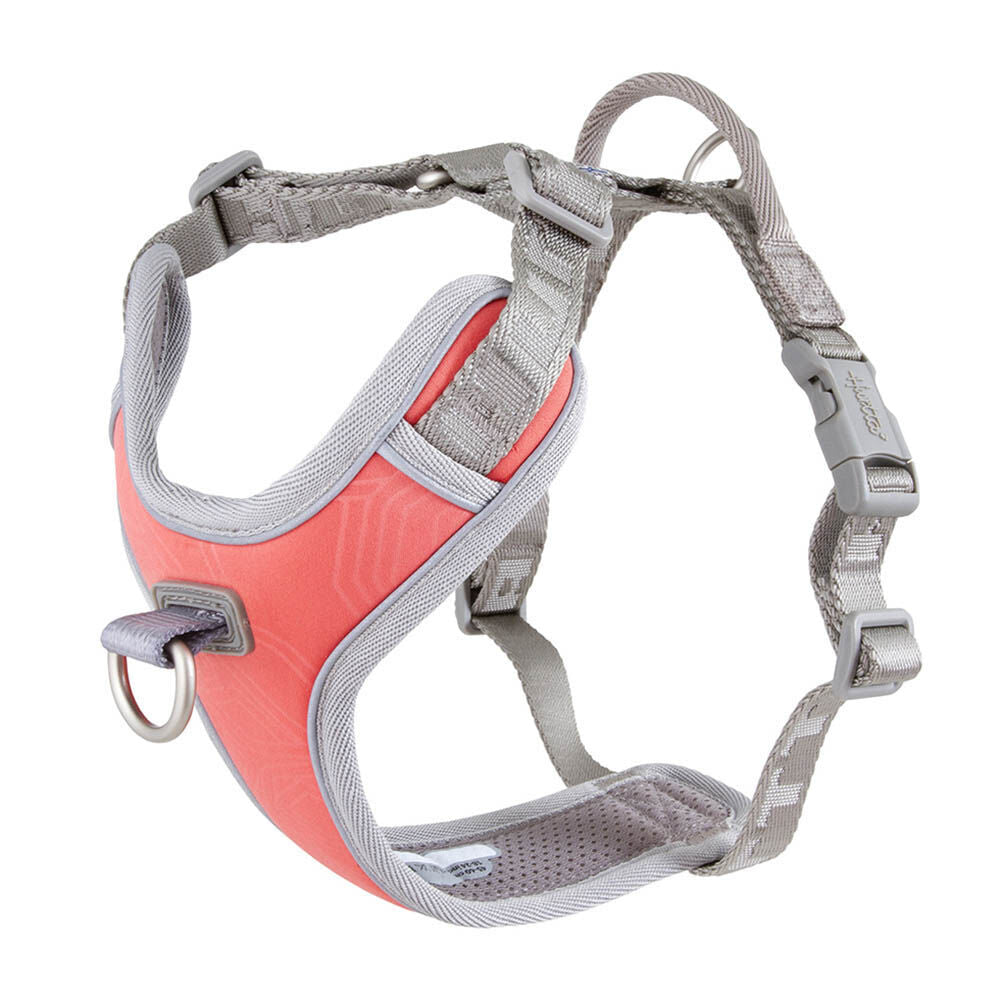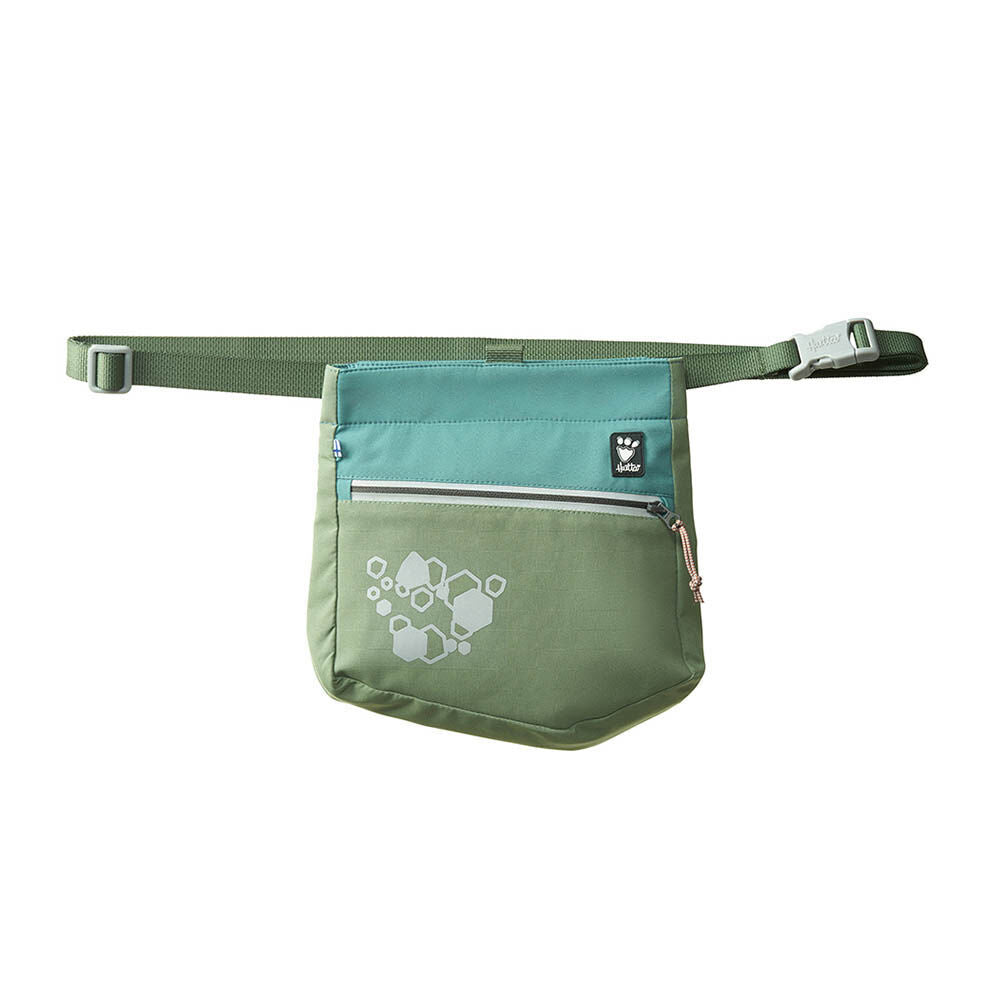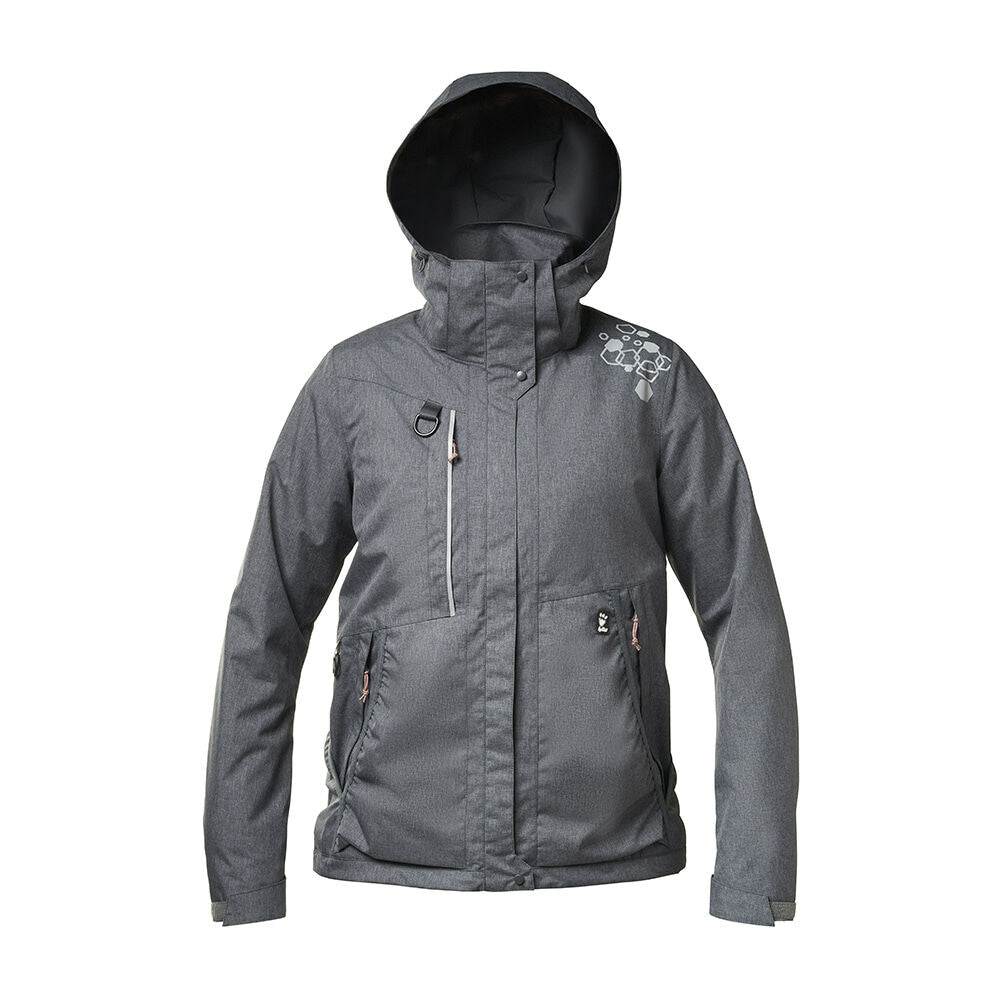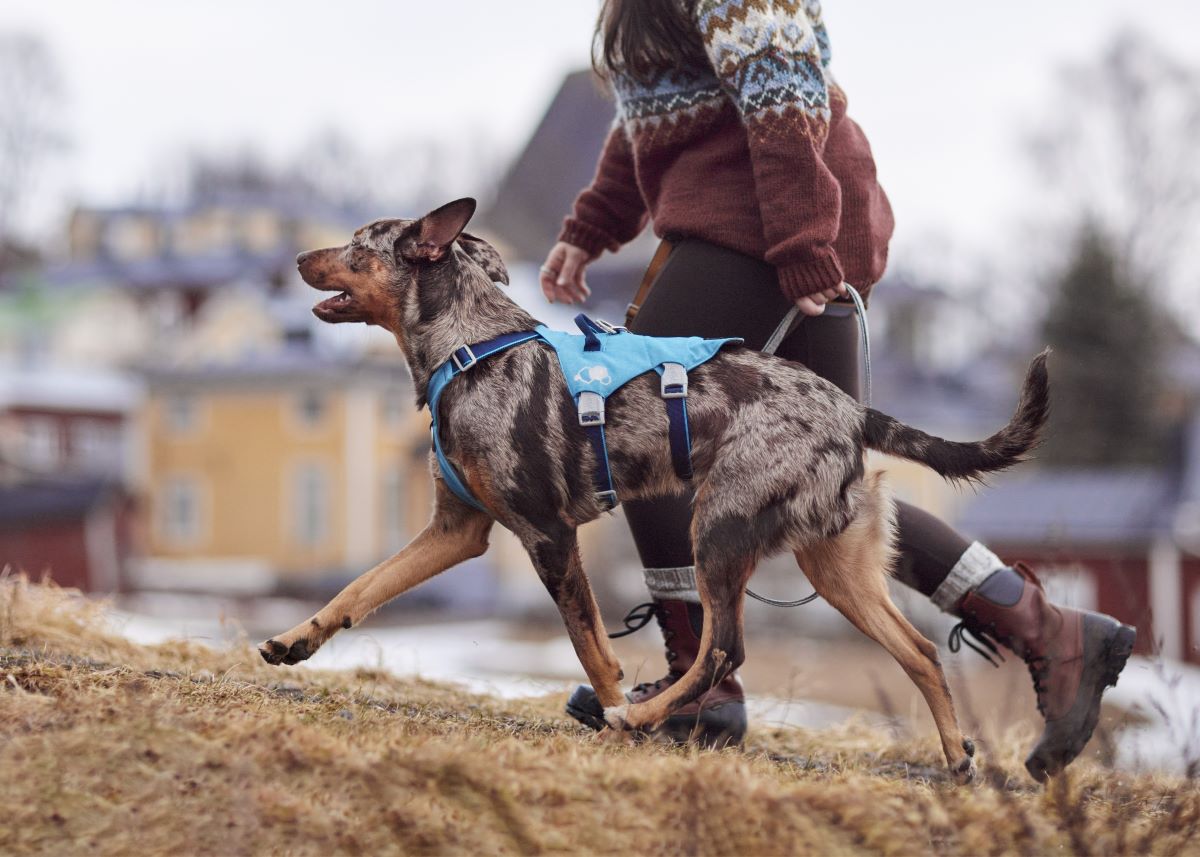How to Teach Your Dog to Walk Beside You
A dog that pulls on the leash is one of the most common issues in dog-owning households. Pulling, darting, and constant tugging can make walks stressful for both parties. Fortunately, dogs love learning new things! The best results come when you get as excited about training as your dog does and have time, patience, and a positive attitude.
An uncontrolled dog can create dangerous situations for itself, its handler, and other pedestrians. The larger the dog, the more important it is to teach good manners; however, even with small dogs, walks are more relaxed when everyone knows the rules. Training should start from puppyhood but adult dog training is also possible.
So how do you teach your dog to walk beside you? Luckily, there are several training methods available! Choose the ones that suit you and your dog best or try them all.
Positive Reinforcement
Positive reinforcement is one of the most effective and popular methods for improving a dog's leash behavior. In this method, the dog is rewarded every time it exhibits desired behavior, encouraging it to repeat such behavior in the future. Rewards can include treats, toys or praise.
Start positive reinforcement by rewarding your dog whenever it walks calmly beside you without pulling. Consistency and patience are key; each successful moment brings you closer to your goal.
Positive reinforcement isn't just about giving treats; it also includes social rewards like praise, petting and playtime. Dogs quickly learn to associate certain actions with rewards they receive. Dogs love cheerful tones of voice so don't hesitate to use yours when praising them—the more unique sounds you make while praising them during training sessions will keep their focus on you.
Using positive reinforcement helps build a trusting relationship between owner and pet. When dogs feel they receive rewards for good behavior their motivation for cooperation increases significantly making training enjoyable for both parties while establishing solid foundations needed later down road ensuring lasting success achieving desired outcomes overall.
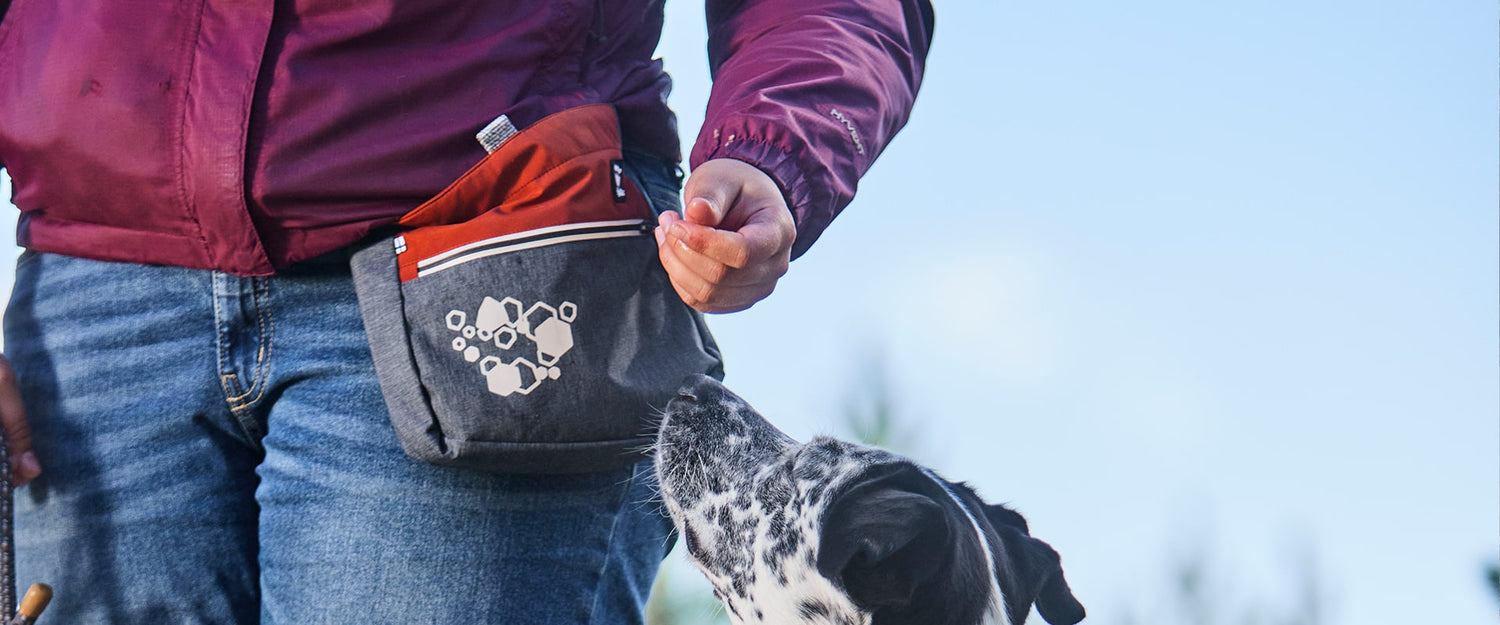
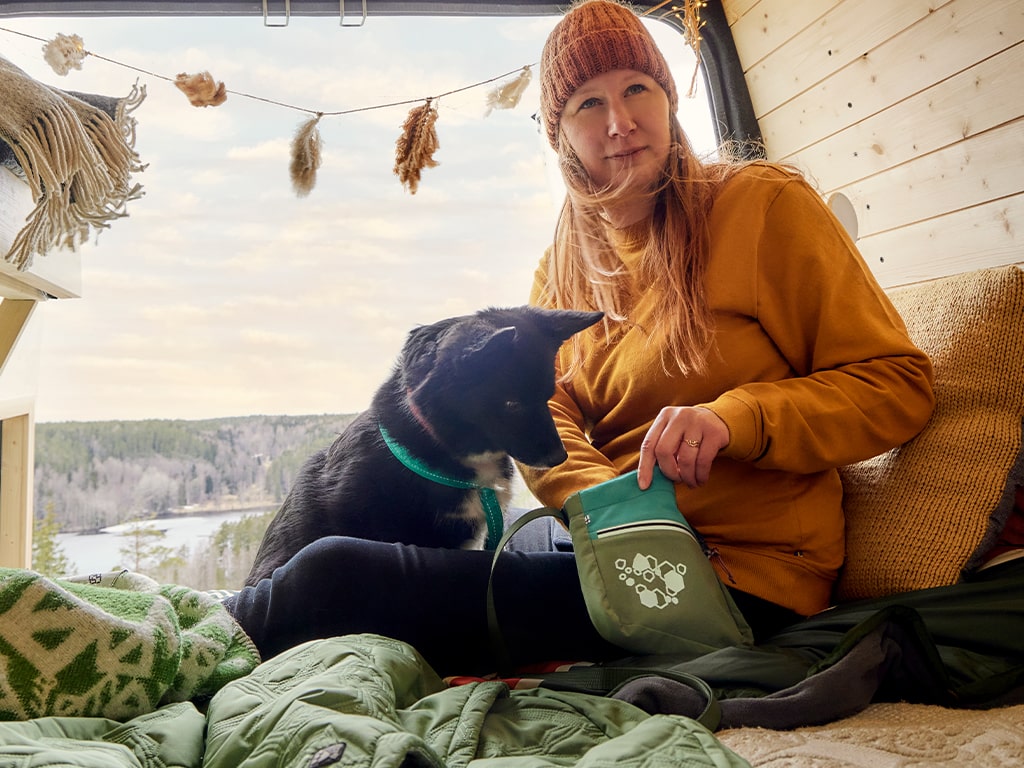
Treat Pocket ECO
The dog training treat bag with a sweet mission. The smart and accommodating Hurtta Treat Pocket ECO is a must-have dog training treat bag that puts recycled materials to good use.
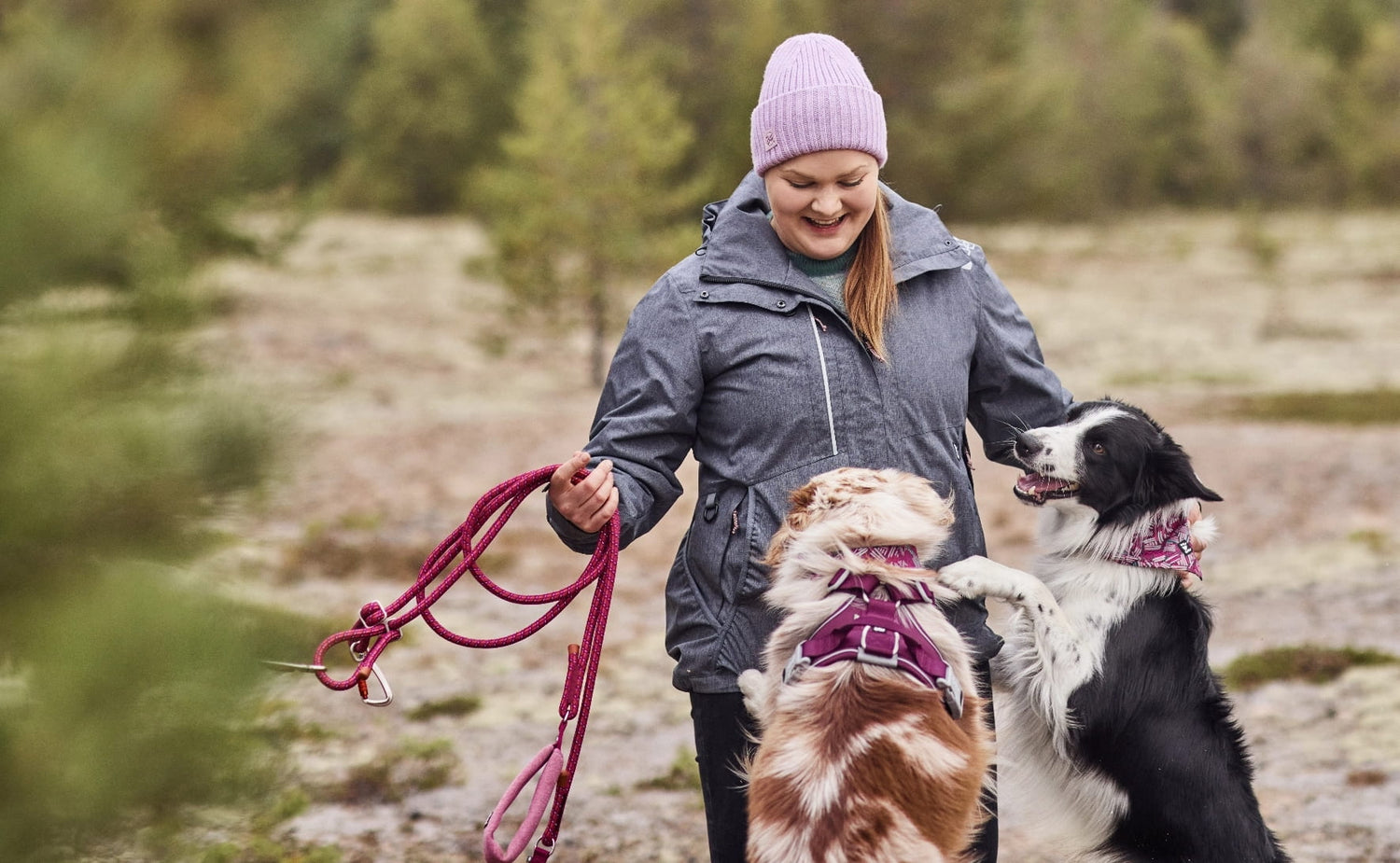
Training Jacket ECO
Our new training jacket keeps you warm and conveniently holds everything you need for training sessions and play days, even toys and personal items.
Clear and Consistent Commands
Clear commands help dogs understand what is expected of them in different situations, such as coming alongside or passing another dog. The commands should be short and easy to remember. In dog training, basic commands can be any words you choose, even in a different language, as long as you consistently use the same word.
Start teaching a new command in a calm environment without distractions. Use a clear and friendly tone of voice and reward your dog whenever it follows the command correctly. For example, if you want to teach the word "heel," say it every time your dog walks beside you without pulling and immediately give a reward.
Consistency is crucial when learning new commands. Always use the same word in the same situation and avoid mixing up commands. Sometimes it can be helpful to use hand signals or other visual cues to reinforce your message. Hand signals are also useful in situations where you can't use your voice for some reason. You can teach hand signals along with verbal commands so that your dog learns to associate the signal with the desired action even without hearing the command.
It's important to keep training sessions short but frequent. Practice commands daily for a few minutes at a time. This helps ensure that your dog learns new commands effectively without either of you getting bored with the training.
Using clear commands allows you to manage various situations during walks better. You can ask your dog to wait at crosswalks or call it back when its attention wanders due to an interesting smell or sight. When your dog trusts that following your instructions leads to positive outcomes, shared walks become smoother and more enjoyable.
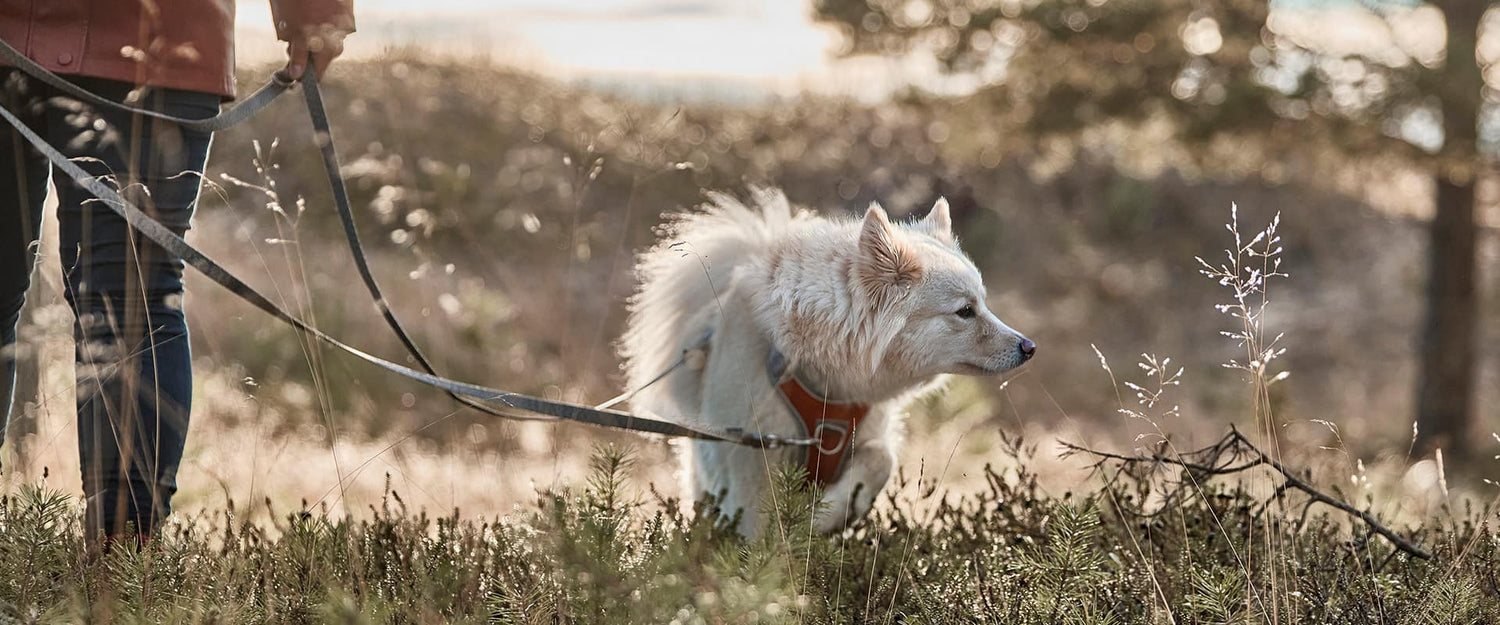
Indoor Leash Training
Indoor spaces offer a calm and controlled environment where dogs can focus on learning without outdoor distractions and temptations. This is especially beneficial for young or energetic dogs when establishing basic training principles indoors first.
Begin by attaching the leash to your dog's collar, dog harness or no-pull dog harness and allow them time to adjust to the feeling of the leash. Walk slowly around the room, keeping the leash loose, and reward your dog whenever it walks beside you without pulling.
Use a chosen command word so that your dog learns to associate verbal commands with desired behavior. Remember to keep your tone positive and encouraging to maintain your dog's motivation. Short but frequent training sessions are key. A few minutes of intensive training several times a day is often more effective than one long session.
When you notice progress in indoor training, gradually move outside, such as into your yard or onto a quiet street. The most important thing is to take it step by step and ensure that your dog understands expectations before adding new challenges.
Managing Leash Tension
Many dogs pull on the leash out of excitement, curiosity, or stress. Therefore, managing leash tension is crucial for improving a dog's walking behavior. It’s important for dogs to learn that walking with a loose leash is more rewarding than pulling.
Start by stopping every time you feel the leash tighten. This signals to your dog that movement stops as soon as they start pulling. When the leash loosens again and your dog returns beside you or looks at you, continue walking and reward them with treats or praise.
Consistency is essential in this method: always stop when pulling begins and only reward when the leash is loose.
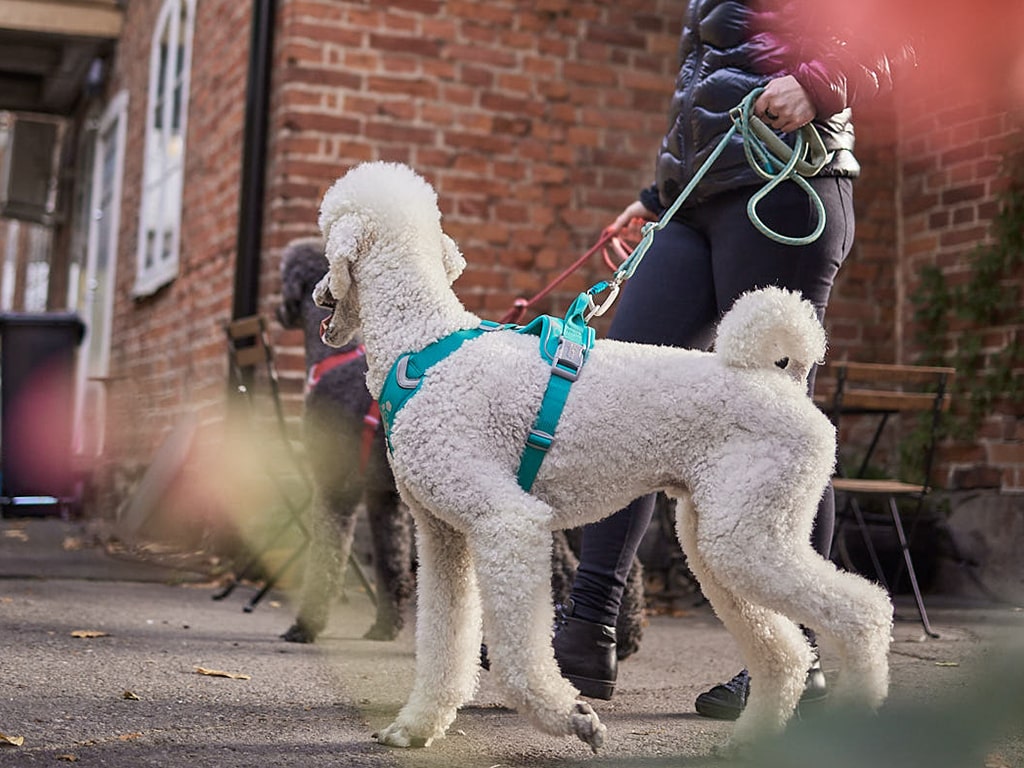
Adjustable Rope Leash ECO
Adjusting the leash length is easy and helps you to keep your dog closer when necessary. The comfortable safety grip offers extra control in difficult situations. Plus there’s a convenient pocket on the grip for storing dog poop bags to make your daily walks easier.
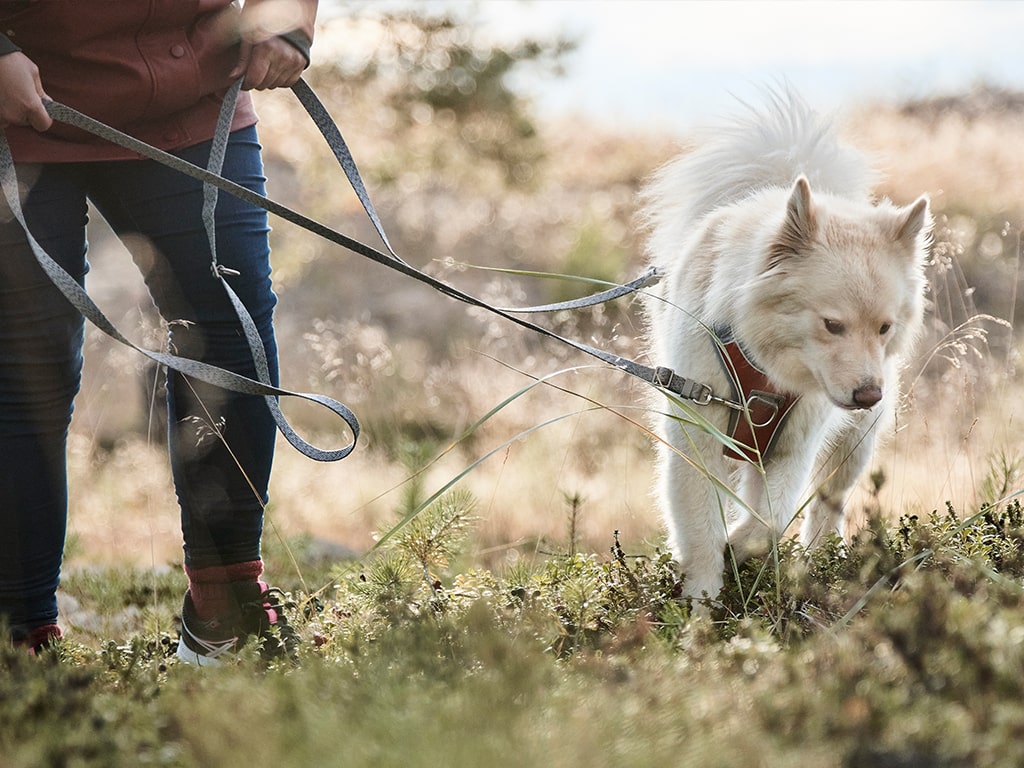
Multi Long Leash ECO
A clever, multifunctional, adjustable-length leash that offers a variety of uses:
1. stepless length adjustment 100-300cm.
2. waist or shoulder jogging
3. leashing two dogs at the same time
4. with front ring attachment for No-Pull harness.
U-Turns and Luring
You can also practice better walking behavior using U-turn methods. When your dog starts pulling forward, quickly turn 180 degrees and walk in the opposite direction. The sudden change will make your dog pay more attention to you rather than pulling ahead.
Another effective technique involves luring with treats held near your thigh so that your dog follows them while keeping the leash loose. Reward frequently at first; this helps establish a positive connection between walking on a loose leash and receiving rewards.
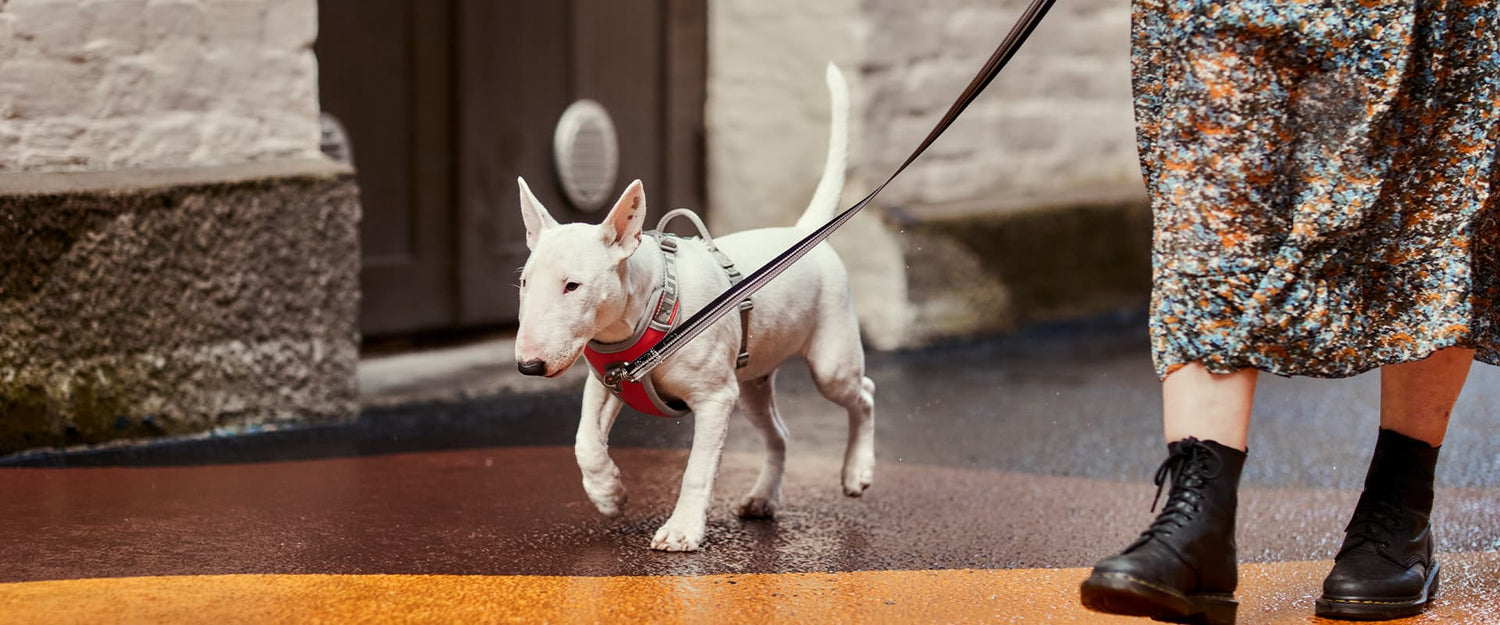
No-Pull Dog Harness
When training your dog for better leash behavior, a no-pull dog harness can be an invaluable tool. These dog harnesses typically have attachment points at the front chest area and the back. When the leash is attached to the front, it gently steers your dog towards you if they start pulling, making it easier to teach them proper walking behavior. Additional benefits of the front ring are:
- Reduces Pulling: When the leash is attached to the front ring, any pulling action by your dog causes their front end to turn towards you. This naturally slows your dog down or even stops them.
- Improves Training: The front ring helps in teaching proper leash behavior. As your dog learns that pulling results in an immediate change of direction, they become more responsive to your movements and commands.
- Enhances Safety: By preventing sudden lunges and reducing the force exerted during walks, the front ring minimizes the risk of injury to both your dog and you.
However, it's important to remember that a no-pull dog harness alone won't solve the problem of pulling. It should be used in conjunction with consistent training techniques to achieve lasting results.
Socialization and Distraction Management
Socialization helps your dog become comfortable with different environments, people, and other animals, reducing stress and excitement during walks. Managing distractions ensures that your dog remains focused on you even in busy or unexpected situations.
Start socializing your puppy by taking them to various places like parks, urban areas, and meet-ups with other dogs. The goal is to expose them safely and positively to different stimuli. Always ensure these experiences are pleasant by rewarding calm behavior with treats or praise.
You can also practice distraction management through playful exercises. For example, place dog treats along your walking route. As you approach a treat, ask your dog to walk past it without stopping and reward them generously when they succeed.
Another effective exercise involves inviting friends with their dogs for joint walks. This allows you to practice leash manners in the presence of other dogs while accumulating positive social experiences.
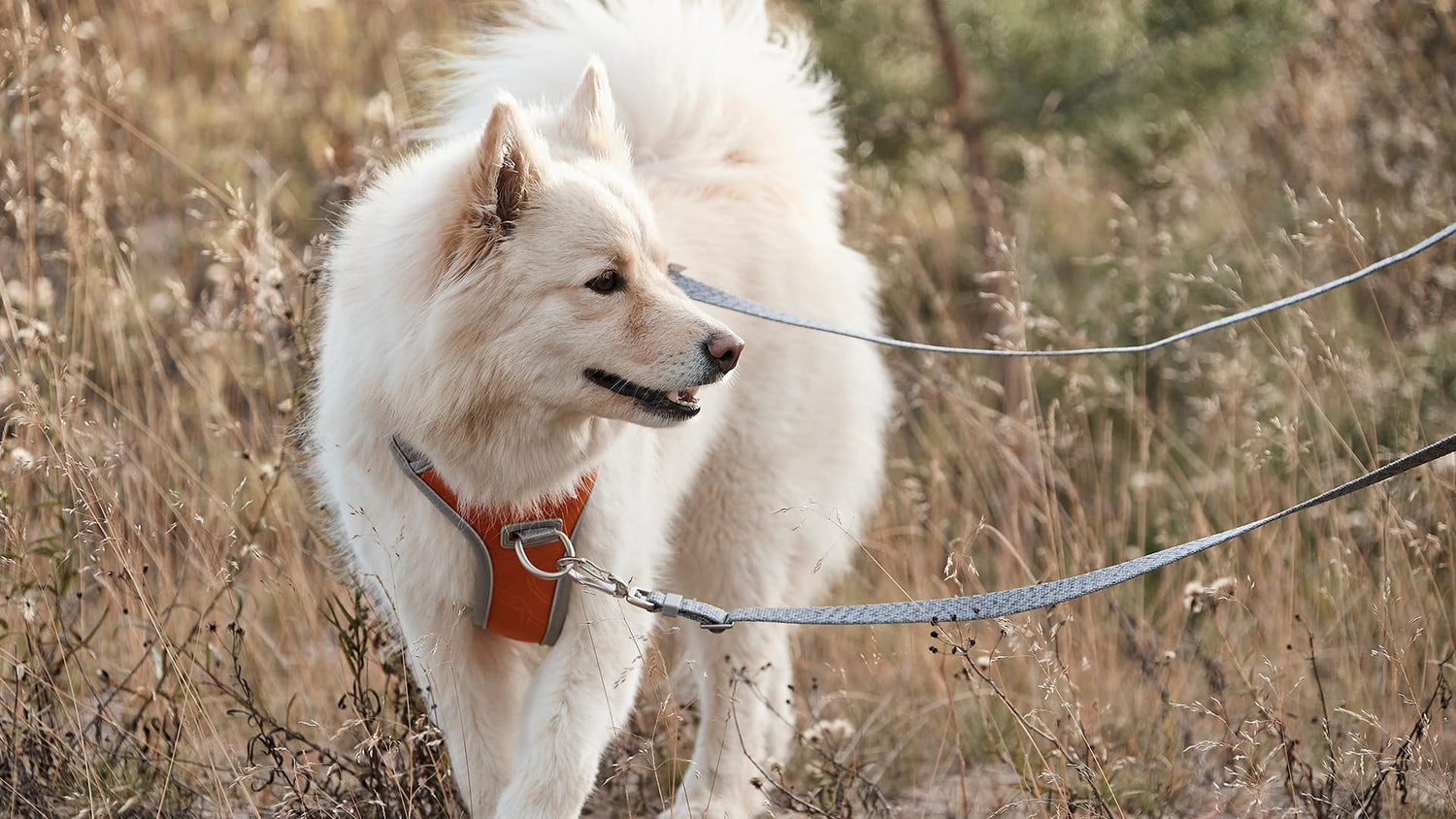
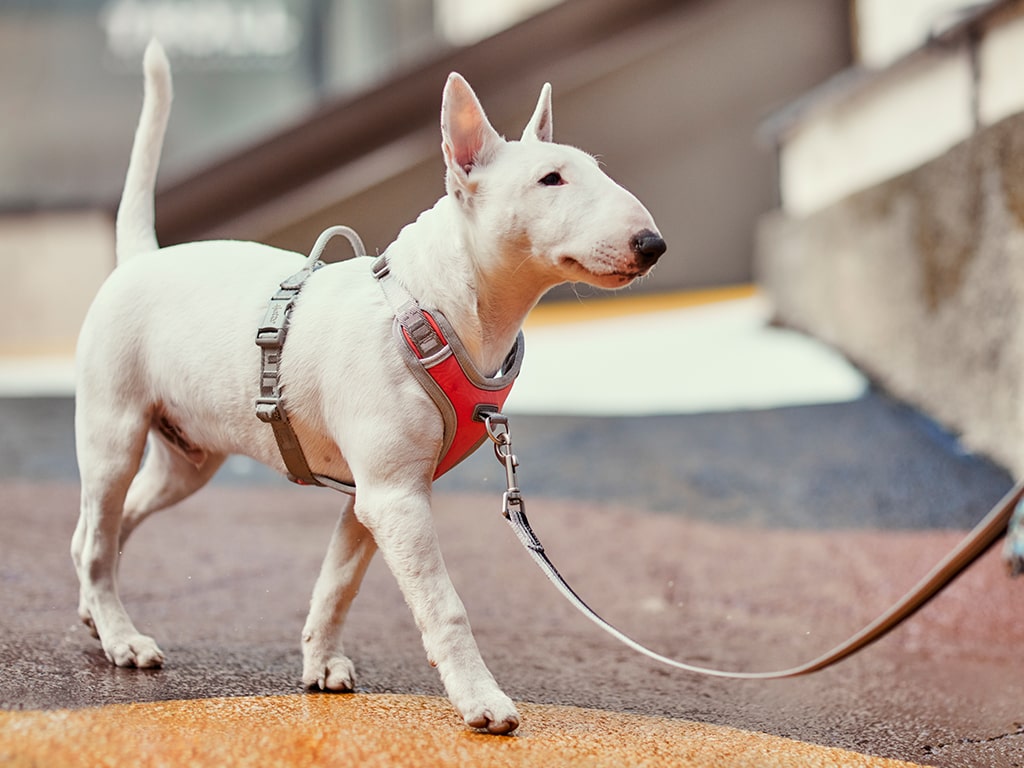
Venture No-Pull Harness
The Venture No-Pull Harness is suitable for daily walks and weekend adventures and it’s perfect for active and mobile dogs and dog owners. Two snap buckles on the adjustable chest section offer easy on-off wearability. There is also additional adjustability at the neckline to ensure a snug fit across a variety of breeds and sizes.
Relaxed Walks and Happy Outings
Improving leash behavior can take time, especially for older or highly energetic dogs. Patience and consistency are key during training sessions. Keep sessions short but frequent and always end on a positive note—this will help maintain both yours' and your dog's motivation over time.
The ultimate goal of leash training is for your dog to focus on you during walks. When there's good communication between you two while walking together calmly without tugging or darting off towards distractions around every corner – outings become more enjoyable overall!
Exciting moments learning new skills await!
Hurtta



